



Do you have a question about the Keysight Technologies FieldFox N9914A and is the answer not in the manual?
| Maximum Output Power | 0 dBm |
|---|---|
| Impedance | 50 ohms |
| Measurement Types | Cable and antenna analyzer, vector network analyzer, spectrum analyzer |
| Display | Color LCD |
| Battery Life | Up to 4 hours |
| Operating Temperature | -10 °C to +50 °C |
| Interface | USB, LAN, GPIB (optional) |
| Dynamic Range | ≥ 100 dB |
Highlights important safety warnings and their meanings before operating the instrument.
Step-by-step instructions for installing the lithium-ion battery into the FieldFox.
Explains how to turn the FieldFox on, switch to standby, and power off the instrument.
Describes features that prevent degradation or damage due to high internal temperatures.
Explains how the instrument manages internal temperature to maintain accuracy and reliability.
Warns about potential damage from excessive power or voltage and lists maximum input limits.
Provides a step-by-step guide to performing Distance to Fault measurements.
Explains how to account for inherent cable loss and velocity factor for accurate TDR measurements.
Allows electrically moving the calibration reference plane after calibration.
Details settings to reduce measurement noise and improve dynamic range.
Describes the gating function to virtually remove undesired responses in Time Domain.
Explains the systematic errors addressed by calibration and when to perform it.
Describes the factory calibration for immediate measurements at test ports.
Provides guidance on performing calibration, including selecting the method.
Ideal for quick calibration using jumper cables or adapters, corrects phase shift, time delay, and loss.
Explains calibration using discrete standards from a Cal Kit for accurate measurements.
Describes ECal as a solid-state calibration solution using electronic standards.
Describes how to verify the calibration is good, including checking phase accuracy.
Explains how RF Attenuation and Preamp functions control power level into the SA.
Guides on how to check for amplifier compression and prevent it.
Explains how to measure signal strength by entering antenna response and cabling factors.
Explains how Res BW affects signal resolution, noise, and sweep speed.
Allows obtaining spectral information by separating signals in the time domain.
Explains how alignments correct for receiver drift over temperature and time.
Lists Channel Power, Occupied Bandwidth, and ACPR measurements offered in SA Mode.
Measures total power over the specified Integrated Bandwidth.
Measures power span and displays vertical posts showing percentage of power contained.
Measures power of carrier and adjacent offset channels to check filter performance.
Guides on setting up EMF measurements with specific options installed.
Lists features of EMF mode: corrected field strength, antenna control, pass/fail testing.
Provides steps for setting up an EMF measurement, including antenna and correction setup.
Explains how to define cells and use OTA measurements for LTE FDD and 5GTF.
Guides on how to record and play back OTA trace data with timestamps and GPS stamps.
Explains how to measure and display phased array antenna elevation and azimuth.
Guides through setting up Option 360 measurements, including IP address and scan configurations.
Explains how to record phased array antenna trace data and play it back.
Guides through setting up a USB antenna measurement, including antenna factor import.
Guides on downloading and using the FieldFox Map Support Tool software.
Reviews steps for setting up Option 352 mapping measurement, including LAN setup.
Provides steps for setting up indoor mapping with Channel Scanner, OTA, or Phased Array Antenna.
Guides through setting up outdoor mapping with GPS Option 307 enabled.
Explains how to record GPS mapping data and play it back at a later time.
Provides an overview of the FieldFox’s Remote Server mode instrument display messages.
Describes the capabilities of the 89600 VSA software for signal evaluation and troubleshooting.
Explains how Spectrogram draws the most recent trace record for visual history.
Provides steps for recording RTSA trace sweeps and playing them back later.
Guides on replaying recorded RTSA trace sweeps.
Explains how to change recording configuration settings like Interval and Source.
Provides instructions for connecting the power sensor to the FieldFox USB ports.
Explains trigger signals for initiating USB Peak Power Sensor acquisition.
Discusses CalReady accuracy and performing QuickCal or Mechanical Cal.
Explains how to 'zero' the Magnitude and Phase display for measurements.
Lists requirements for ERTA mode and features removed or disabled during synchronization.
Guides through physical setup, connecting cables, and testing partnerships.
Covers selecting measurement settings like Frequency range, Res BW, Points, and Zeros pan.
Explains how to quickly 'zero' traces by removing frequency response errors.
Details settings to reduce measurement noise and improve dynamic range.
Explains how to demodulate and characterize AM/FM signals.
Explains the calculations for SINAD and THD distortion metrics.
Discusses possible AM/FM Metrics error messages and how to correct them.
Explains how Channel Scanner enables displaying channel power vs. frequency for multiple channels.
Guides through setting up a channel scan measurement.
Explains measuring signal strength by entering antenna response and cabling factors.
Explains how Noise Figure mode uses the Y-factor technique to calculate noise figure.
Guides on defining measurement setups like DUT type, frequency context, and loss compensation.
Explains how to calculate and display measurement uncertainty.
Provides an example procedure for measuring noise figures using auto integration.
Provides solutions for measurement results that may be invalid (NaNs).
Explains how markers move along the X-axis to provide numerical readouts and search for Y-axis values.
Explains how to move markers to locations on the trace that exhibit search criteria.
Provides two ways to build a fixed limit line: From a trace or by entering X/Y data points.
Details performing math operations between live and memory traces.
Guides on adjusting Y-axis scale for viewing trace portions and autoscale.
Determines whether the FieldFox sweeps continuously or holds the display results.
Restores FieldFox measurement settings to a known condition (factory default or mode default).
Explains settings that survive FieldFox shut down and power ON.
Explains how to conserve battery power by managing RF source power and settings.
Guides on how to save current settings, traces, and pictures to a file.
Guides on how to copy files to another device or delete files.
Describes ways to view battery charge status: icons, Battery screen, and built-in gauge.
Provides instructions for charging the battery internally or externally.
Provides guidelines for visually inspecting the battery for signs of degradation.
Offers tips on using the battery and recharging to maximize its lifespan.
Provides guidance on proper disposal of lithium-ion batteries according to regulations.
Lists general safety warnings for operating the FieldFox instrument.
Provides safety warnings and precautions for using the AC/DC adapter.
Details safety considerations for the external battery charger.
Lists safety warnings for handling and using lithium-ion batteries.
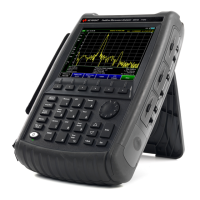



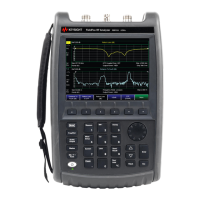


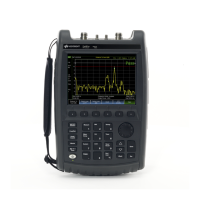
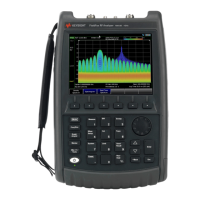
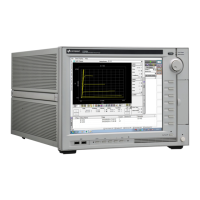


